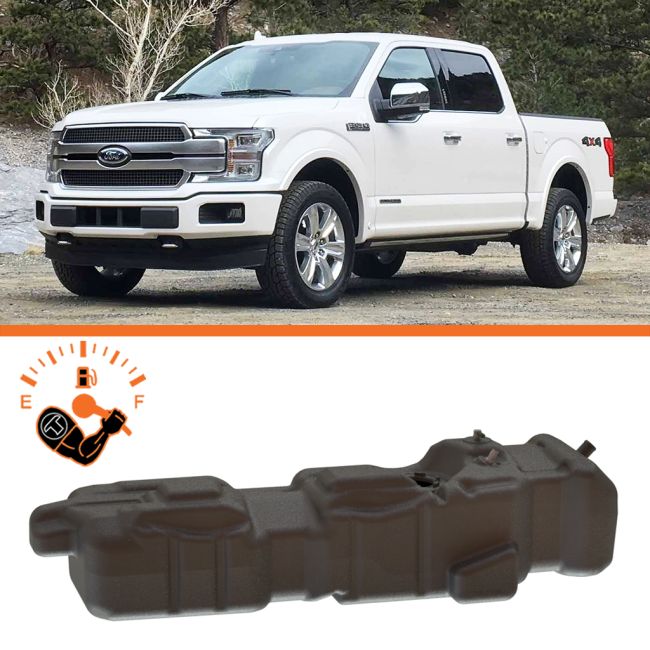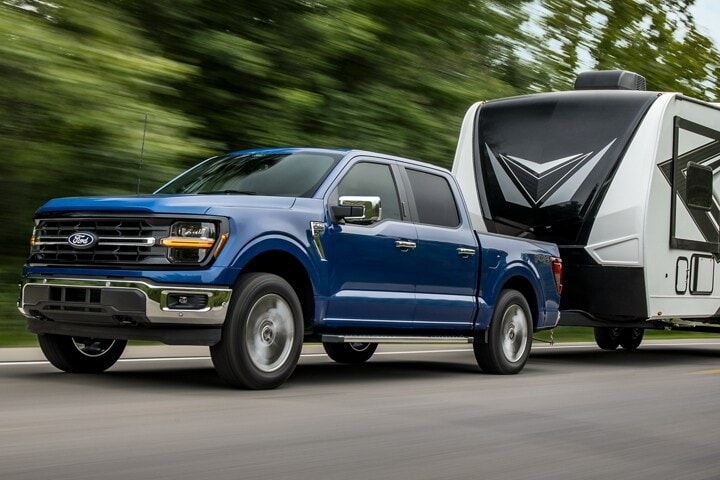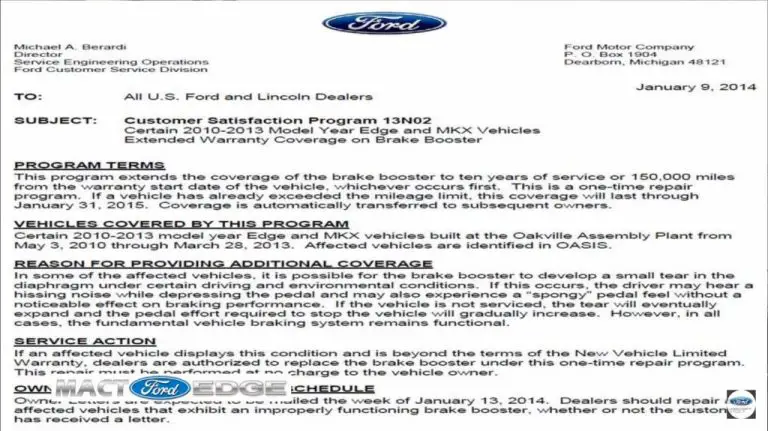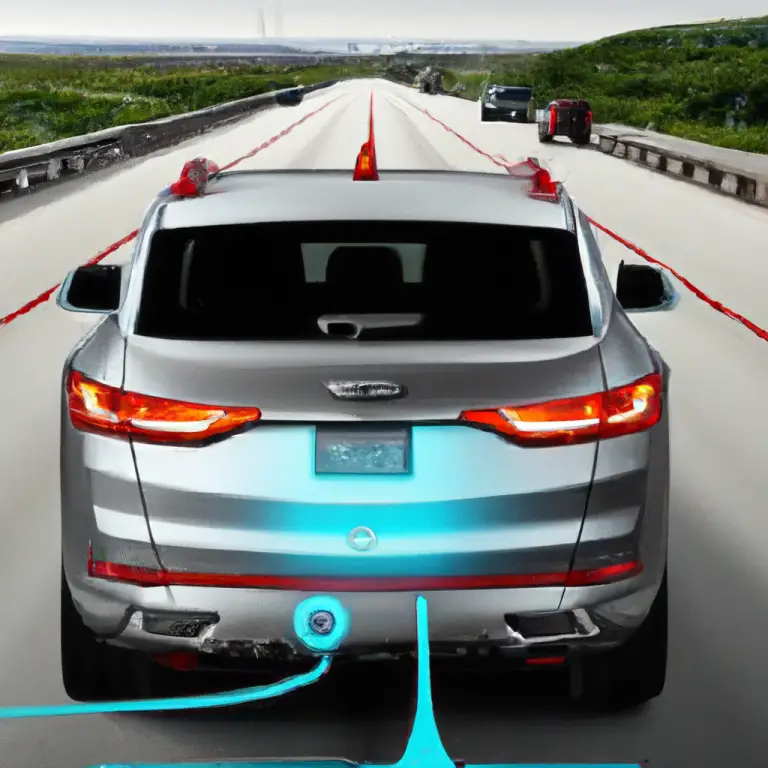F-150 Gas Tank Size: Maximize Your Range Now!
Key Takeaways
- Diverse Tank Options: The F-150 offers 23-gallon, 26-gallon, and a class-leading 36-gallon fuel tank, catering to different needs.
- Driving Range Matters: A larger tank translates to fewer stops, especially beneficial for long hauls or remote work.
- Fuel Efficiency Plays a Role: Tank size works hand-in-hand with MPG for overall range.
- Consider Your Usage: Your daily commute, towing habits, and adventurous spirit should guide your tank choice.
- Resale Value Impact: A larger tank can be a desirable feature for future buyers.
So, you're eyeing a Ford F-150, huh? Smart choice! These trucks are practically American legends. But before you drive off into the sunset, there's one little detail that often gets overlooked: the gas tank size. It might seem small, but trust me, it makes a huge difference in your daily life and your wallet. Let's dive in and figure out which tank is right for your adventures.
Why Does Ford F-150 Gas Tank Size Even Matter?
You might be thinking, "A gas tank is a gas tank, right?" Not exactly! The size of your F-150's fuel tank directly impacts how often you're stopping at the pump. For folks who spend a lot of time on the road, whether it's for work, hauling a boat to the lake, or just hitting up those epic cross-country road trips, a bigger tank can be a game-changer. Think about it: less time pumping, more time living.
Understanding the Options: What Sizes Are Available?
Ford knows its customers aren't one-size-fits-all. That's why they offer a few different fuel tank options for the F-150. You've got choices, and those choices depend on the specific configuration of your truck.
The Standard 23-Gallon Tank
This is often the default for many F-150 configurations, especially on shorter wheelbase models or those with certain engine choices. It’s a perfectly capable tank for most daily driving and light-duty work. You'll get decent range, but you'll be visiting the gas station more frequently than with the larger options.
The Mid-Range 26-Gallon Tank
A slight step up from the 23-gallon, this option offers a bit more breathing room between fill-ups. It’s a good compromise for those who want a bit more range without going for the biggest available tank. You might find this on various trim levels and cab/bed configurations.
The Class-Leading 36-Gallon Tank
Now we're talking! This is the big daddy, the long-haul hero. The 36-gallon tank is a popular choice for anyone who tows regularly, drives long distances for work, or just hates stopping for gas. This option significantly extends your range, making those cross-state trips a breeze. It’s often an upgrade or standard on higher trims and specific configurations like the SuperCrew or longer beds.
How Does Tank Size Affect Your Driving Range?
This is where the rubber meets the road, literally. Your driving range is a combination of your truck's fuel economy (MPG) and its tank size. A bigger tank generally means a longer range, but your engine choice plays a huge role too.
Calculating Your Potential Range
Let’s put some numbers to it. Say your F-150 gets an average of 20 miles per gallon (MPG).

| Tank Size (Gallons) | Estimated Range (Miles) @ 20 MPG |
|---|---|
| 23 | 460 |
| 26 | 520 |
| 36 | 720 |
Note: These are estimates. Actual range varies based on driving conditions, terrain, payload, towing, and driving style.
See how that 36-gallon tank really stretches your journey? That's a significant difference, especially if you're pulling a heavy load or exploring remote areas where gas stations are few and far between.
Is a Bigger Tank Always Better?
Not necessarily for everyone! While the allure of fewer fill-ups is strong, there are a few things to consider before you automatically go for the biggest tank.
The Weight Factor
A full 36-gallon tank adds a good chunk of weight to your truck compared to a 23-gallon one. At roughly 6 pounds per gallon, a full 36-gallon tank adds about 216 pounds. While the F-150 is a robust truck, this extra weight can slightly impact your overall payload capacity and even your fuel efficiency, albeit minimally.
Initial Cost
Sometimes, the 36-gallon tank is an optional upgrade, meaning an extra cost when you're buying the truck. For some, that upfront cost might not justify the convenience if their driving habits don't demand the extended range.

Your Driving Habits and Needs
This is the big one. Ask yourself:
- How often do you drive long distances?
- Do you frequently tow heavy trailers or boats?
- Is your commute short and local?
- Do you live in an area with readily available gas stations?
If you're mostly doing city driving or short commutes, a 23 or 26-gallon tank might be perfectly adequate. Why pay for and carry around extra fuel you rarely use? But if you're a weekend warrior, a contractor, or someone who loves cross-country adventures, the 36-gallon tank will feel like a blessing.
Fuel Economy and Engine Choices: A Dynamic Duo with Tank Size
Remember, the tank size is only half the equation. Your F-150's engine and its fuel economy ratings are the other half. Ford offers a range of powerful and efficient engines.
Popular F-150 Engine Options and Their MPG (Estimates)
| Engine Type | Estimated Combined MPG (2WD/4WD) |
|---|---|
| 3.3L Ti-VCT V6 | 21/20 |
| 2.7L EcoBoost V6 | 22/20 |
| 5.0L Ti-VCT V8 | 20/19 |
| 3.5L EcoBoost V6 | 20/19 |
| 3.5L PowerBoost Full Hybrid | 25/23 |
Note: MPG figures are estimates and can vary based on model year, trim, and driving conditions.

Pairing a 36-gallon tank with a highly efficient engine like the 3.5L PowerBoost Hybrid means you could potentially go over 800 miles on a single tank! Imagine that: driving from New York City to Indianapolis without stopping for gas. That's freedom!
Resale Value: Does Tank Size Matter to Future Buyers?
You bet it does! When it comes to selling your F-150 down the line, a larger fuel tank can be a significant selling point. Many buyers, especially those looking for a work truck or a family hauler, appreciate the convenience of extended range. It’s one of those "nice-to-have" features that can make your truck stand out in the used market.
Final Thoughts: Making the Right Choice for Your F-150
Choosing your Ford F-150's gas tank size isn't just about how much gas it holds; it's about optimizing your driving experience for your specific needs. It’s about convenience, efficiency, and peace of mind on the road.
If you’re a casual driver, the standard 23-gallon or 26-gallon might be perfectly adequate and save you a few bucks upfront. But if you’re a frequent long-distance traveler, a dedicated tower, or someone who just despises gas station stops, that 36-gallon tank is going to be your best friend.
So, when you’re spec'ing out your next F-150, take a moment to consider your lifestyle. Will you be conquering cross-country highways, navigating city streets, or hauling heavy loads? Your answer will lead you to the perfect fuel tank size for your next adventure. What's your take? Do you prioritize range or initial cost? Share your thoughts in the comments below!
Frequently Asked Questions (FAQs)
Q1: What are the common fuel tank sizes available for the Ford F-150?
A1: The Ford F-150 typically offers three main fuel tank sizes: 23 gallons, 26 gallons, and a class-leading 36 gallons. The availability of each size can depend on the specific F-150 configuration, including the cab style, bed length, and trim level.
Q2: Does the F-150 fuel tank size affect its towing capacity?
A2: No, the fuel tank size itself does not directly affect the F-150's maximum towing capacity. Towing capacity is primarily determined by the truck's engine, axle ratio, frame, and other heavy-duty components. However, a full, larger fuel tank will contribute to the truck's overall gross vehicle weight, which can indirectly impact the available payload capacity for other cargo or passengers.
Q3: Can I upgrade my F-150's gas tank to a larger size after purchase?
A3: While it is technically possible to replace a smaller fuel tank with a larger one, it's generally not a straightforward or recommended aftermarket modification. It would involve significant labor, potential modifications to the fuel lines and mounting, and could void certain warranties. It's best to choose the desired tank size when purchasing the truck.
Q4: How far can a Ford F-150 go on a full tank of gas?
A4: The range of an F-150 on a full tank depends on both the tank size and the truck's fuel efficiency (MPG). For example, a 36-gallon tank paired with an engine achieving 20 MPG could offer around 720 miles of range. A 23-gallon tank at 20 MPG would provide about 460 miles. Actual range varies based on driving conditions, payload, and driving style.
Q5: Is the 36-gallon fuel tank standard on any F-150 models?
A5: The 36-gallon fuel tank is often an optional upgrade on many F-150 trim levels and configurations, but it can be standard on certain higher trims or specific long-wheelbase/SuperCrew configurations, especially those designed for heavy-duty use or extended range. Always check the specific build sheet or dealership information for the model you are interested in.







